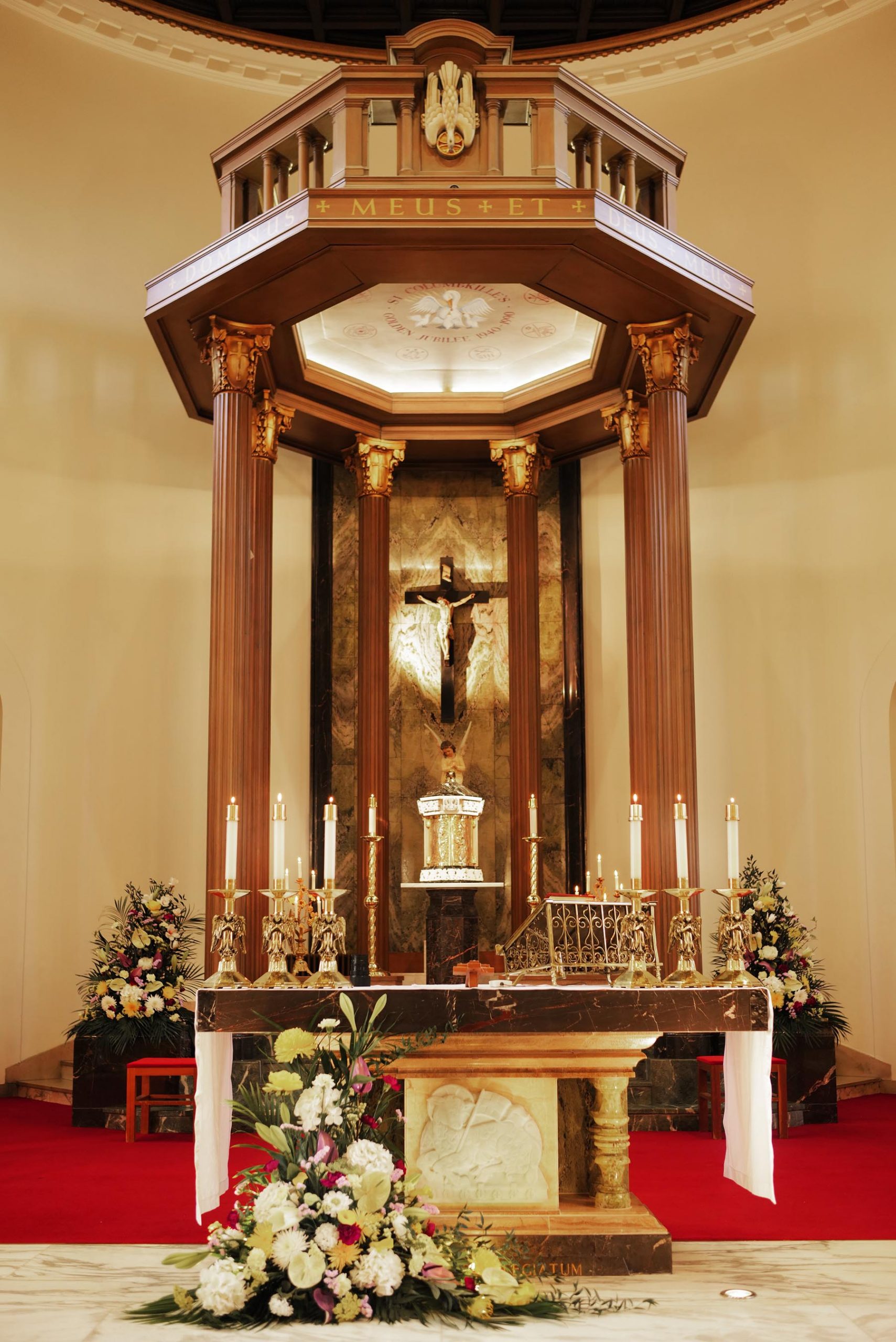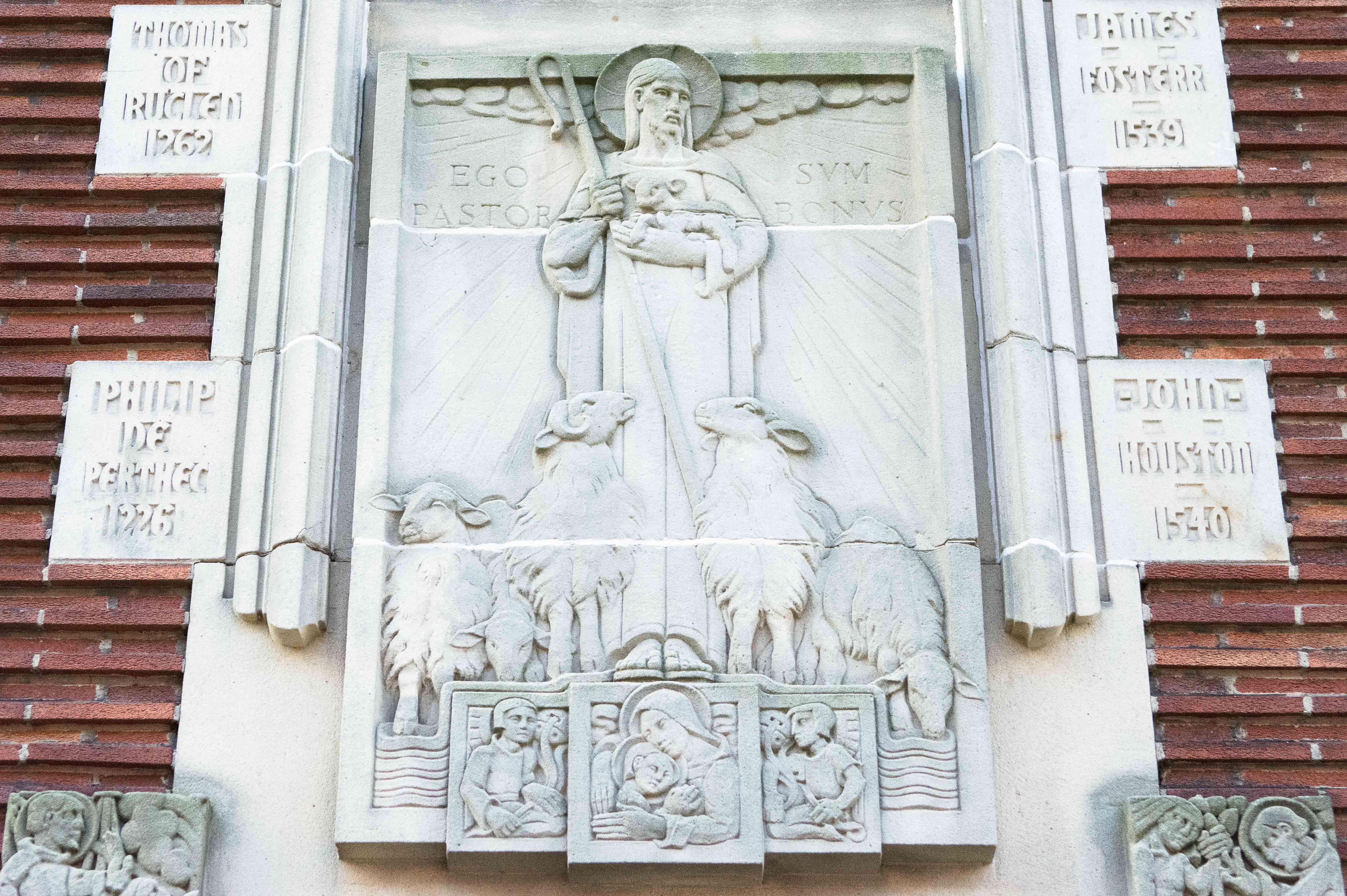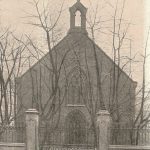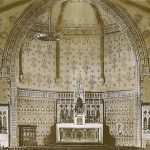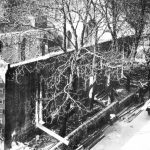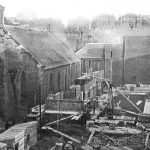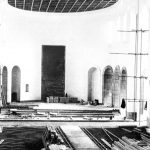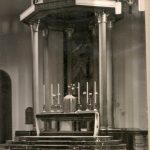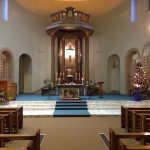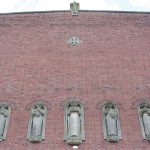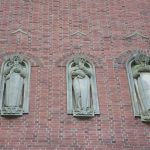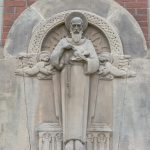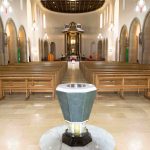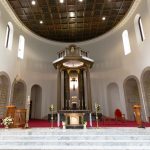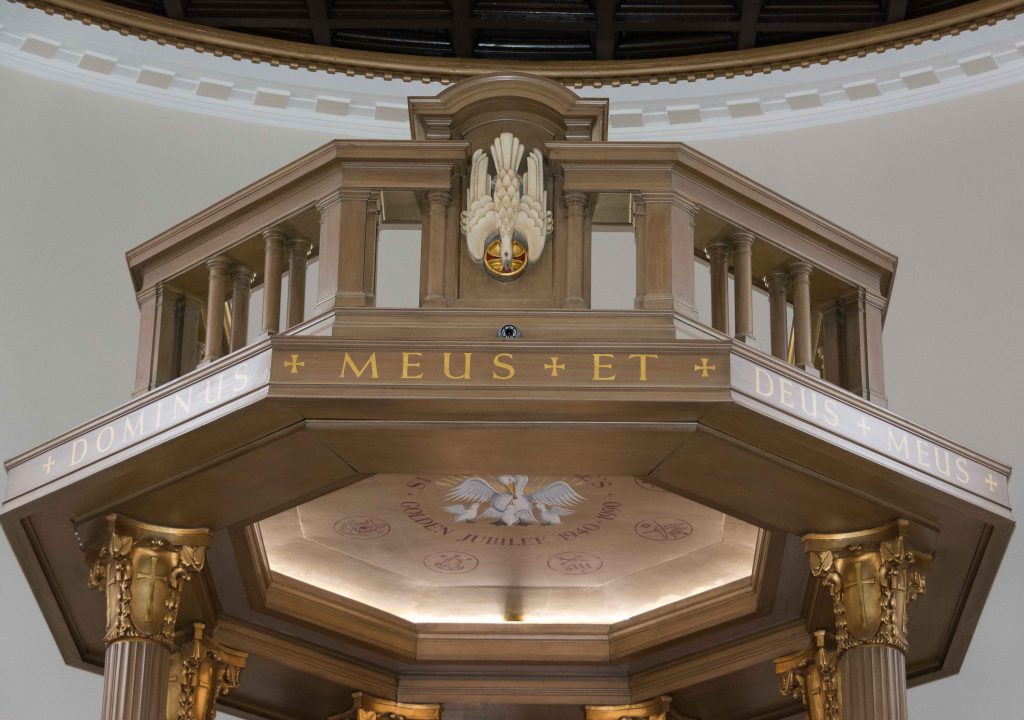Parish History
The story of the Catholic Church in Rutherglen dates back over fourteen centuries. Since that time, four Catholic churches have been established on or near the present site.
6th Century Church of St Conval
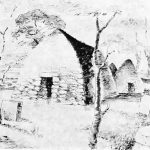 St Conval was a follower of St Ninian who had first brought the Gospel to Scotland. Like Columba he had come from Ireland and he worked as disciple of St Mungo (Kentigern) to establish the faith among Druid tribes in the Glasgow area. Eventually the first church – probably a wattled structure made of plaited twigs – was established on the site of the present Parish Kirk and graveyard in Main Street. In the five centuries after Conval’s death, Scotland was immersed in warfare among rival kings and Norse invasions. By 1126, in the reign of King David, Rutherglen had emerged from the darkness of these times to become the most considerable town between Ayr and Lanark and the first Royal Burgh of Scotland, with the Church taking central place in the town.
St Conval was a follower of St Ninian who had first brought the Gospel to Scotland. Like Columba he had come from Ireland and he worked as disciple of St Mungo (Kentigern) to establish the faith among Druid tribes in the Glasgow area. Eventually the first church – probably a wattled structure made of plaited twigs – was established on the site of the present Parish Kirk and graveyard in Main Street. In the five centuries after Conval’s death, Scotland was immersed in warfare among rival kings and Norse invasions. By 1126, in the reign of King David, Rutherglen had emerged from the darkness of these times to become the most considerable town between Ayr and Lanark and the first Royal Burgh of Scotland, with the Church taking central place in the town.
Mediaeval Church of St Mary the Virgin
Mediaeval Rutherglen was a market town in which goods from the countryside were sold and tolls were levied on all goods sold within a wide area from Maryhill to Eaglesham, Lesmahagow and Linlithgow. 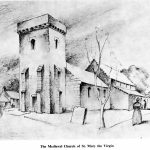 Glasgow was within the area of Rutherglen and very much subservient to it at this time. It was a King’s town with its own castle where the King stayed yearly. In the 12th century one of the most important Norman Churches in Scotland was built on the site of the original church of St Conval. Named as the Church of St Mary the Virgin, it survived until 1794.
Glasgow was within the area of Rutherglen and very much subservient to it at this time. It was a King’s town with its own castle where the King stayed yearly. In the 12th century one of the most important Norman Churches in Scotland was built on the site of the original church of St Conval. Named as the Church of St Mary the Virgin, it survived until 1794.
In 1189 the church in Rutherglen was “appropriated” to Paisley Abbey. Over the centuries the Rutherglen parish was governed by a number of “vicar” priests, appointed by Paisley Abbey. Some of their names can be seen carved above the current Presbytery door: Philip de Perthec 1226, Thomas of Ruglen 1262, James Fosterr 1539 and Hohn Houston 1540. The last pre-Reformation priest was Matthew Fleming.
St Columbkille’s Parish
1851 Church
St Columbkille’s Parish was founded in 1851 to care for the needs of many people coming to Glasgow from the Highlands and from famine-torn Ireland. They were seeking work and opportunities to raise their families. They founded this parish community and built a church and a school. The original church was situated to the east of the present church and accommodated 600 people.
1940 Church
As the Parish grew, so did the need for a bigger church. Therefore the people of the parish, together with the priests, embarked on building the church prior to World War II. The current church building, designed by renowned architect G.A. Coia, opened in 1940. It has a capacity of 1,000.
The 1940 building is distinctive in scale and design. The front exterior shows the sculpted figures of Jesus and the four Evangelists, together with the dove of the Holy Spirit. St Columba and his monk companions are displayed in bas relief above the doors.
Inside, the ceiling is made of Austrian oak as is the Baldachino which soars from the sanctuary floor above the tabernacle towards the ceiling. The altar is made of onyx and green marble and the Reredos on the back wall behind the crucifix is made of Connemara marble.
2016 Renovation
Since being opened in 1940 the Church has undergone various renovations, some structural and others decorative. In 2014 it was deemed necessary to undertake significant building works over two main phases:
- external structural repairs to the roof and building exterior;
- internal refurbishment & redecoration, including new heating and lighting.
During these times, over a three-year period, the Parish Hall was used for daily and weekend Masses.
Parish Centenary Booklet
A booklet to mark the Parish Centenary was published in 1953 to tell the story of St Columbkille's parish up until 1953. It can be viewed or downloaded by using the link in the box on the right side.

